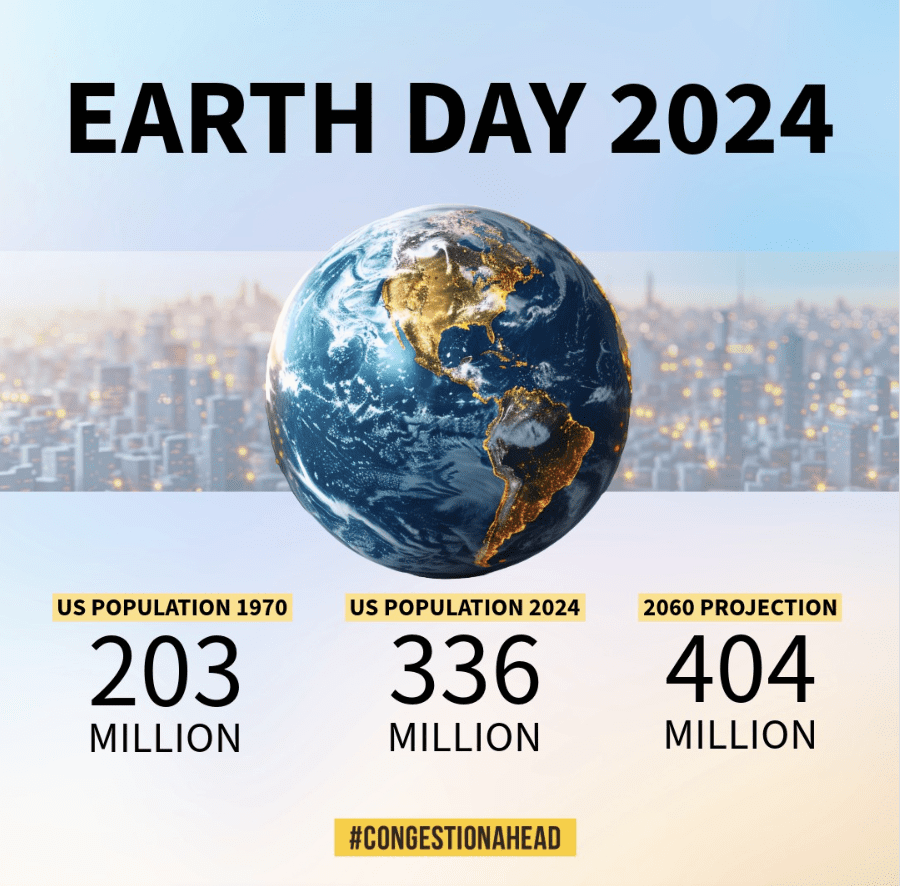Since 1970, every year on April 22, Earth Day has served as a reminder of our collective responsibility to protect and preserve the environment. In the years leading up to the first Earth Day, industrial expansion and technological progress almost always took priority over environmental concerns. But, in 1962, this dynamic changed when Rachel Carson’s book, “Silent Spring,” sparked awareness regarding the detrimental effects of pollution on the environment, and especially birds.
Inspired by growing public concerns, and following a devastating oil spill off the coast of Santa Barbara in 1969, Senator Gaylord Nelson, along with activist Denis Hayes and Congressman Pete McCloskey, began laying the groundwork for a day of nationwide demonstrations and advocacy efforts. On April 22, 1970, our nation’s first Earth Day, over 20 million Americans (representing 10% of the nation’s population at the time) participated in rallies and teach-ins, calling for urgent action to address the environmental challenges of the day – overpopulation being a paramount concern.

Although there have been many environmental achievements since then, concerns about America’s authentic sustainability have dropped away and Earth Day has become focused on mitigating global climate change along with all kinds of “green marketing” (e.g., energy-saving devices, alternatives to plastics). But what happened to Rachel Carson’s clarion call to protect America’s environment and wildlife?
As our population gets larger, so do our environmental problems. In 1982, the U.S. population was 232 million. During the 42 years that have followed, to accommodate an additional 104 million people, we have paved over 43 million acres of natural land — an area the size of Florida. Not only has the resulting habitat loss endangered more than 1,000 species, America’s unsustainable growth has been exacerbating other serious environmental problems which get worse with each passing Earth Day — water scarcities, fisheries collapse, urban sprawl, loss of prime farmland, and deforestation.
Take Action: Mass immigration makes a mockery out of Earth Day
Over recent decades, there has been a measurable decline of America’s biodiversity, which includes fewer fireflies, frogs, birds, butterflies, as well as bats in the sky. Since the first Earth Day, data indicate that North America has experienced a whopping 30 percent reduction in the number of birds, wreaked by multiple man-made causes such as habitat loss and pesticide use.
Such dire impacts make one wonder — how much will America’s population continue to grow? The answer to this question has been taken out of our hands. For now, Congressional leaders have decided that residential overcrowding, and bulldozing of natural open spaces, will continue indefinitely because of their inability and/or unwillingness to bring immigration rates down to more sustainable levels. Our nation will continue to become less resilient to natural weather events as populations expand into sensitive lands (e.g., floodplains, wetlands, deserts, unstable slopes, fire prone areas). We also will continue to lose vital natural resources such as farmland, forests, wilderness, and connected wildlife habitat.
Although a politically-sensitive topic, immigration clearly is driving America’s population growth. According to Pew Research, between 1965 and 2015, immigration drove 55 percent of the U.S. population increase, and will drive more than 90 percent of future growth. David Brower, the first executive director of the Sierra Club, knew that reducing immigration levels was a necessary part of population stabilization and achieving authentic sustainability. He said: “Overpopulation is perhaps the biggest problem facing us, and immigration is part of that problem. It has to be addressed.”
Congress needs to heed the warnings of Earth Day and focus on the root causes of environmental degradation — unsustainable population growth. If America is ever to attain authentic sustainability, then Congress must assess the rates, and sources, of population growth. In fact, a far more sustainable immigration level would be around half-million a year as was recommended by the bi-partisan U.S. Commission on Immigration Reform, chaired by former Democratic Congresswoman Barbara Jordan, in 1995. That would reduce annual immigration to around the levels from as recently as the 1980s.
What’s at stake is clear – unless America stabilizes its population by lowering its high immigration rates, our nation will continue to suffer a wide range of negative and irreversible environmental consequences, Earth Day festivals notwithstanding.
See your latest actions: Action Board.
Explore More: Conservation Challenges, Sustainability Initiatives, Our Studies.
Take Action
Your voice counts! Let your Member of Congress know where you stand on immigration issues through the Action Board. Not a NumbersUSA member? Sign up here to get started.
Donate Today!
NumbersUSA is a non-profit, non-partisan organization that relies on your donations to works toward sensible immigration policies. NumbersUSA Education & Research Foundation is recognized by America's Best Charities as one of the top 3% of well-run charities.
Immigration Grade Cards
NumbersUSA provides the only comprehensive immigration grade cards. See how your member of Congress’ rates and find grades going back to the 104th Congress (1995-97).